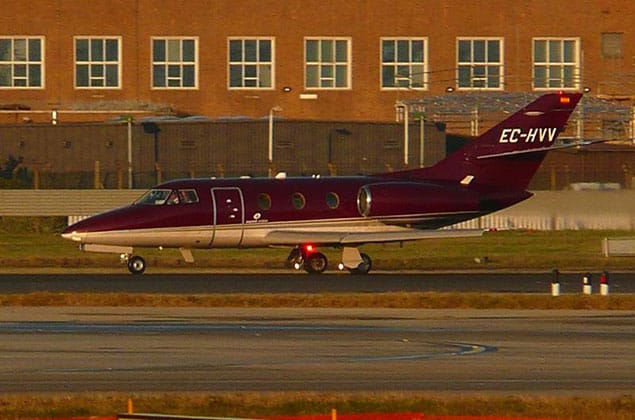Falcon 100 Specifications & Booking
Overview of the Falcon 100
The Dassault Falcon 100 is a French-made business jet, manufactured by Dassault Aviation. It is a twin-turbine-powered aircraft designed for short-range, high-speed transportation. The Falcon 100 first took to the skies on August 4, 1963, and has since become a popular choice among private pilots and charter operators.
Technical Specifications
Here are the key technical specifications of the Falcon 100:
- Dimensions: Length: 53 ft 6 in (16.31 m), Wingspan: 44 ft 1 in (13.43 m), Height: 15 ft 4 in (4.67 m)
- Weight: Empty weight: 14,200 lb (6,435 kg), Maximum takeoff weight: 24,000 lb (10,886 kg)
- Engines: Two General Electric CJ610 turbojets, each producing 2,400 lbf (10.7 kN) of thrust
- Performance: Maximum speed: 530 mph (853 km/h), Range: 1,800 nm (3,330 km), Cruising altitude: 35,000 ft (10,668 m)
- Capacity: Passengers: 7-8, Cargo: 300 lb (136 kg), Crew: 2
Design and Features
The Falcon 100 boasts a unique design featuring a delta wing configuration, which provides improved stability and maneuverability. The aircraft also features a retractable tricycle landing gear system, allowing for efficient takeoffs and landings.
History and Development
- Key milestones: First flight: August 4, 1963, Certification: June 1965, Entry into service: 1966
- Challenges faced during development: Overcoming the challenges of developing a new aircraft design and obtaining certification from regulatory authorities.
- Significant upgrades or variants: The Falcon 100 underwent several upgrades, including the installation of more powerful engines and improved avionics.
Operational Use
The Falcon 100 is primarily used for private aviation purposes, such as charter flights, corporate transportation, and personal travel. Some notable operators include:
- Airbus Corporate Jets
- Cessna Aircraft Company
- NetJets
Interesting Facts
Here are a few interesting facts about the Falcon 100:
- The Falcon 100 holds the record for the fastest transatlantic flight by a twin-turbine-powered aircraft.
- The aircraft has been featured in several films and TV shows, including the James Bond movie "Goldfinger" and the TV series "The Jetsons."
- Only a handful of Falcon 100s remain airworthy today, making them highly sought after by collectors and enthusiasts.
Frequently Asked Questions
What makes the Falcon 100 unique?
The Falcon 100's unique delta wing configuration, retractable landing gear, and powerful turbojet engines set it apart from other aircraft of its time.
How much does the Falcon 100 cost?
The estimated cost range for a used Falcon 100 is between $500,000 to $1 million, depending on its condition, configuration, and customization.
What is the range of the Falcon 100?
The Falcon 100 has a range of approximately 1,800 nm (3,330 km), making it suitable for short-range flights within North America or transatlantic trips with minimal cargo.
Which airlines operate the Falcon 100?
Airbus Corporate Jets and other private aviation operators use the Falcon 100 for charter flights, corporate transportation, and personal travel.
Is the Falcon 100 still in production?
No, the Falcon 100 is no longer in production. The last Falcon 100 rolled off the assembly line in the early 1970s. However, some vintage models continue to be restored and maintained for private use and display.





